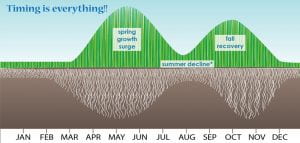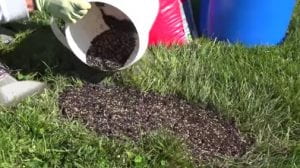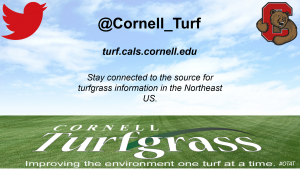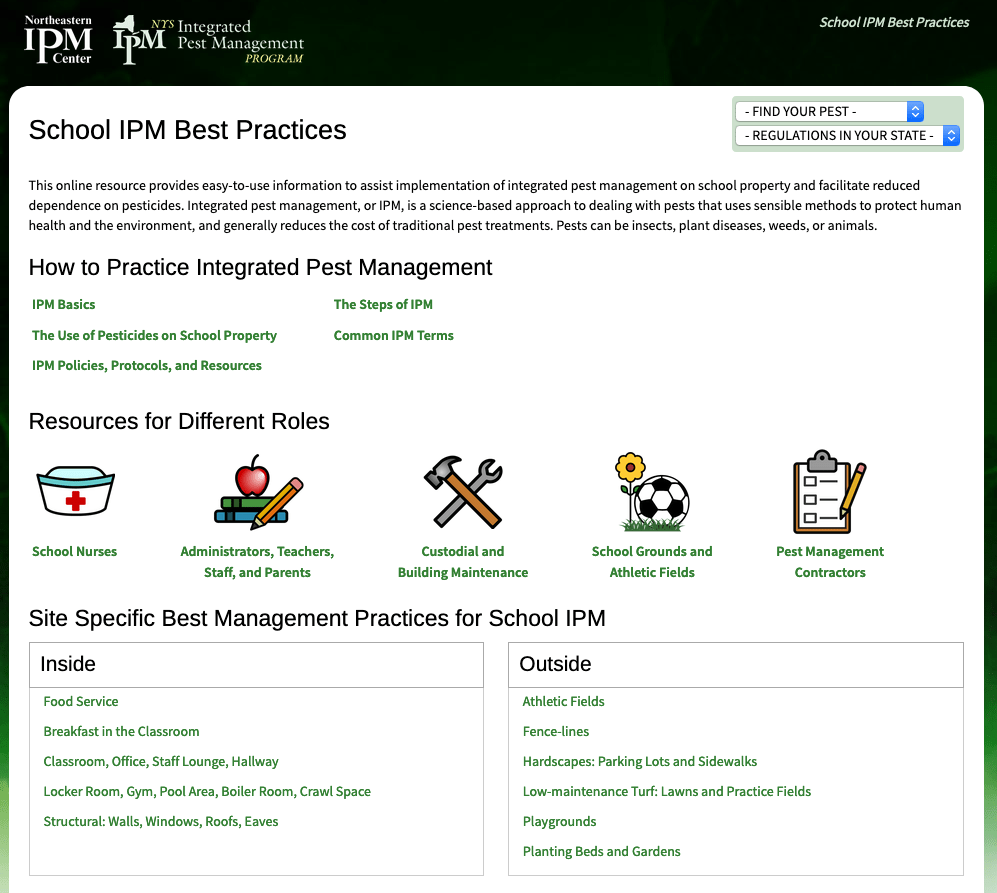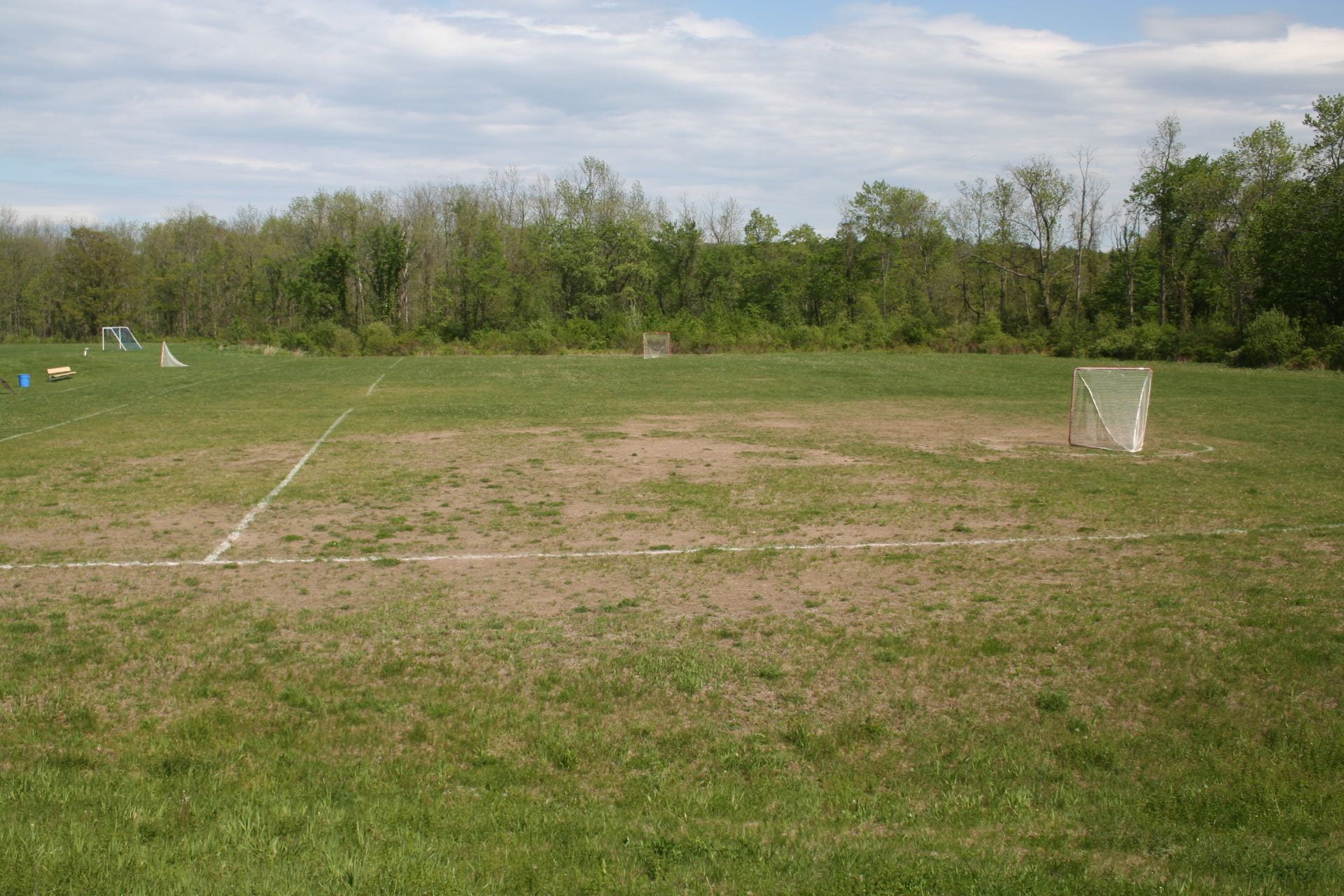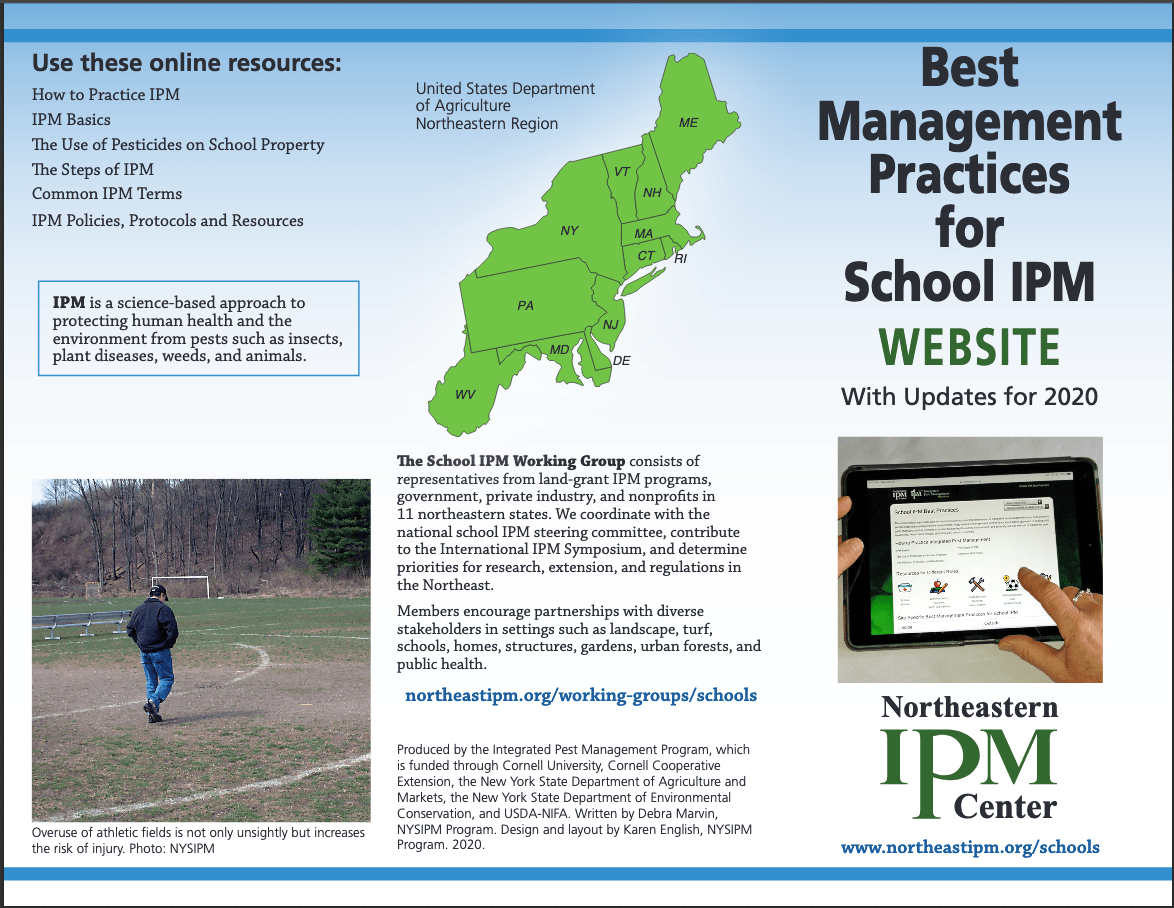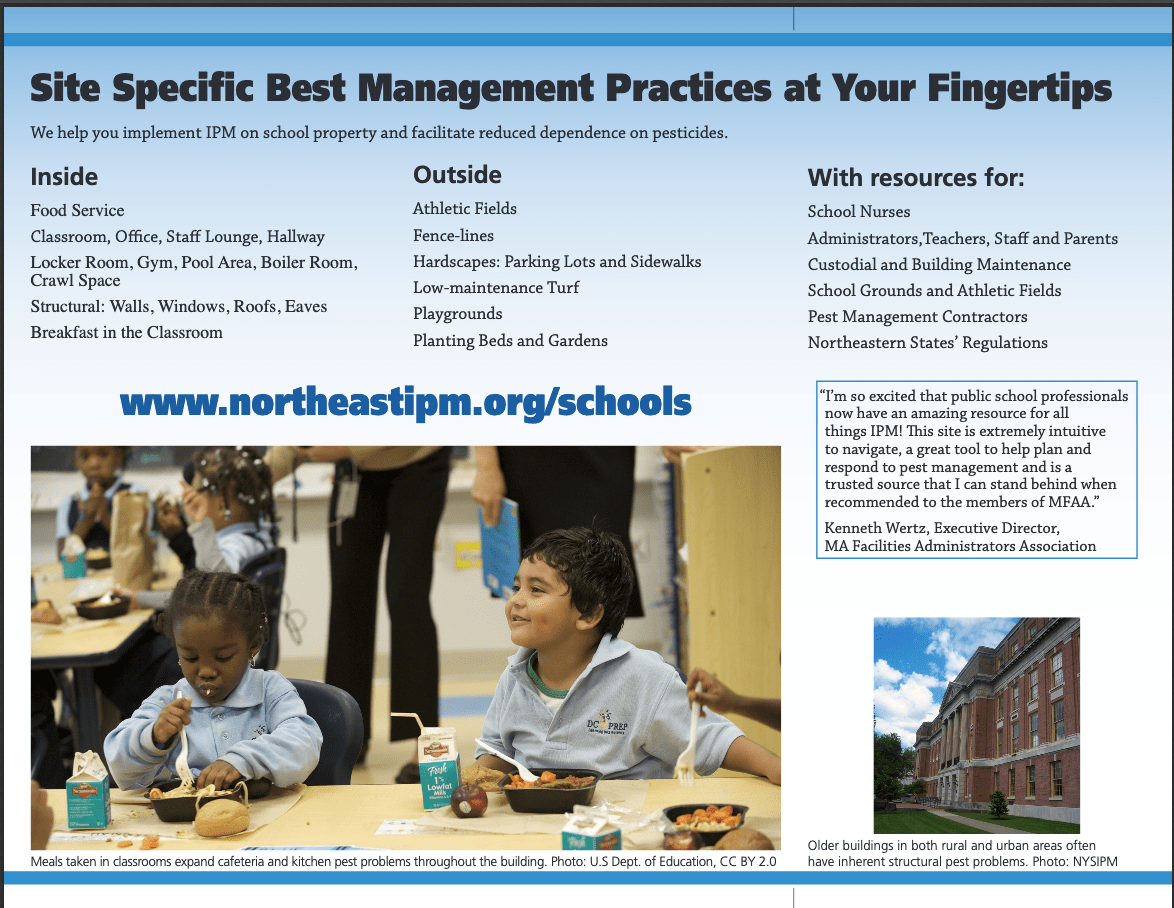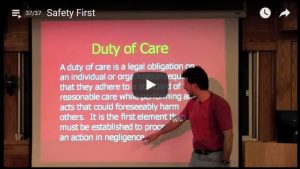Are you interested in turfgrass management? Especially as it relates to sports fields? Then the ShortCUTT (Cornell University Turfgrass Times) newsletter, written by Associate Professor and Extension Turfgrass Specialist, Dr. Frank Rossi, is for you! Check out a segment of this week’s offerings.
To receive a copy of the weekly newsletter, e-mail program manager, Carl Schimenti at css223@cornell.edu. Prefer your information verbally? Subscribe to the weekly Turf Talk podcast.
Frequently Asked Questions:

In the simplest of terms, the more use a field receives, the more preparation it will need prior to the initiation of use, maintenance during the traffic period, and recovery maintenance following the traffic. Photo: Bob Portmess
My fields are showing wear stress already after three weeks of use as a result of rainy and now very warm conditions. I’m trying to speak with coaches and parents about field use under these conditions. They keep asking the same question of me, “how many hours of use CAN the field handle”? Can you help?
First big kudos for recognizing the need to communicate with your clients regarding the conditions and safety of the fields. Effective communication is the consistent characteristic of successful professional sports turf managers. We have provided some useful tools to assist with the general information for players, parents, coaches and athletic directors at http://safesportsfields.cals.cornell.edu/coaches.
Additionally, there will not be any hard fast answer to the question without some qualification and understanding of the root zone, type of use, maintenance inputs, and visual quality expectations.
Our first responsibility is to ensure player safety as measured by field hardness, evenness and traction; other field issues become subjective as to what constitutes an “acceptable playing surface”. Again, there are gray areas when discussing amount of use, as poor weather experienced over the last 30 days has led to significantly more wear stress and field decline than expected under average weather patterns. Finally, larger amounts of managed field area that allows for dispersal of focused traffic and the availability of synthetic surfaces both significantly increase overall amount of natural grass playing field use.
Rootzones:
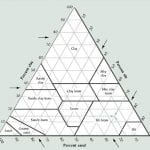
Soil properties impact traffic tolerance.
Loamy soil root zones with some drainage and some irrigation can withstand more than the average amount of use. Sand-based fields with excellent drainage can withstand significantly more than the average amount of use.
Type of Use:
Any type of field use that results in repetitive focused traffic, i.e., between the hash marks, goal mouths, sidelines, will reduce the amount of field use. Larger male athletes create more traffic stress than lighter female athletes. Youth sports with smaller athletes and smaller field dimensions that can be rotated, allow for much more use than average. Again rotation allows for dispersal of the traffic.
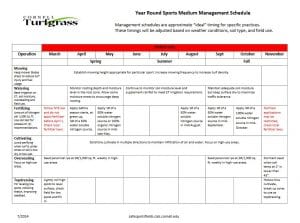
Schools and community parks are able to provide different levels of field maintenance based on their budget and the resources on hand that include labor (knowledge and experience), equipment and products. Other factors play into shifting resources, such as desired quality, type of field and use (practice vs game fields).
Maintenance Inputs:
Reasonable care of fields is expected as outlined in ASTM F2060 for cool season natural grass fields – this will include some amount of field rest and recovery as outlined in these important maintenance schedules. In the simplest of terms, the more use a field receives, the more preparation it will need prior to the initiation of use, maintenance during the traffic period, and recovery maintenance following the traffic. No maintenance program will compensate for overuse that leads to decline in field quality below acceptable levels and will need a routine turf replacement program as seen in most professional sporting venues.
Visual Quality Expectations:
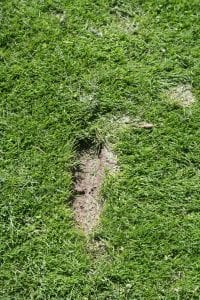
A soft, bright green field with poor traction is less safe than a slightly brown, firm, even surface. Photo: Joellen Lampman
Players, coaches, parents and Athletic Directors have the right expect to safe playing fields. Sports turf managers must have field safety measurements to effectively determine when field use leads to decline in safety. The visual quality of the field often is correlated to field safety but not always, as a soft bright green field with poor traction is less safe than a slightly brown firm even surface.
In the end, general guidelines suggest good field conditions can be maintained with reasonable care at between 400-600 hours of use per year per field. Beyond 600 hours of use expect a loss in field quality and significant thinning and wear areas even under ideal conditions.
Many thanks to Frank Rossi for providing permission to share this information. For more information on sports field management, visit the Cornell Turfgrass page on Sports Turf and the New York State Integrated Pest Management page on Landscapes, Parks, and Golf Courses.
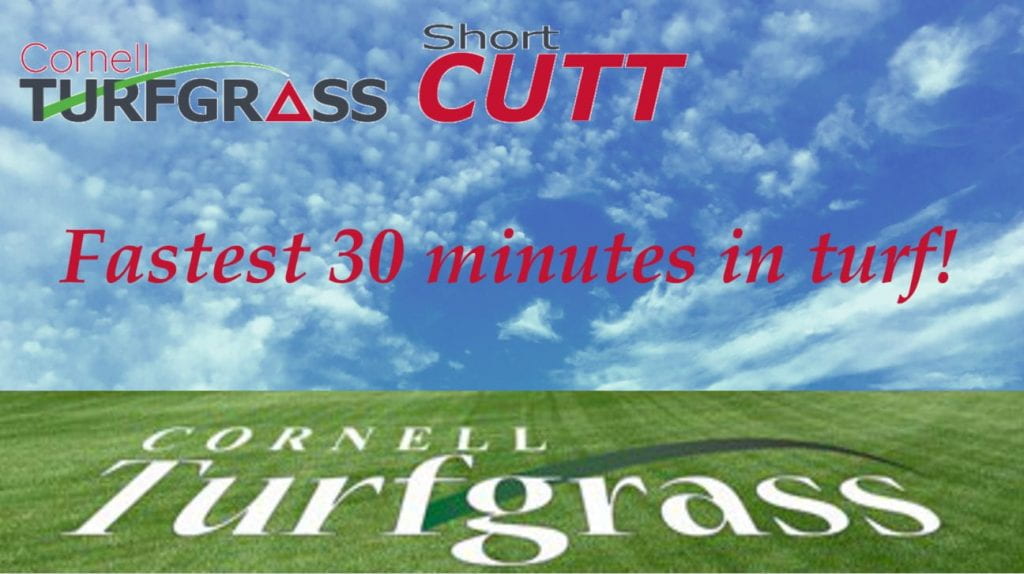 There will be a golf focused webinar every Thursday through this time and topics relevant to lawns will alternate with sports fields on Fridays. It’s a good idea to check on the topics for those not specific to sports fields, as there might be something of relevance to you. For example, the webinar series kicks off Thursday, March 11th, with Art Degaetano, Professor in the Cornell Department of Earth and Atmospheric Sciences, who will provide us with a winter weather review.
There will be a golf focused webinar every Thursday through this time and topics relevant to lawns will alternate with sports fields on Fridays. It’s a good idea to check on the topics for those not specific to sports fields, as there might be something of relevance to you. For example, the webinar series kicks off Thursday, March 11th, with Art Degaetano, Professor in the Cornell Department of Earth and Atmospheric Sciences, who will provide us with a winter weather review.

